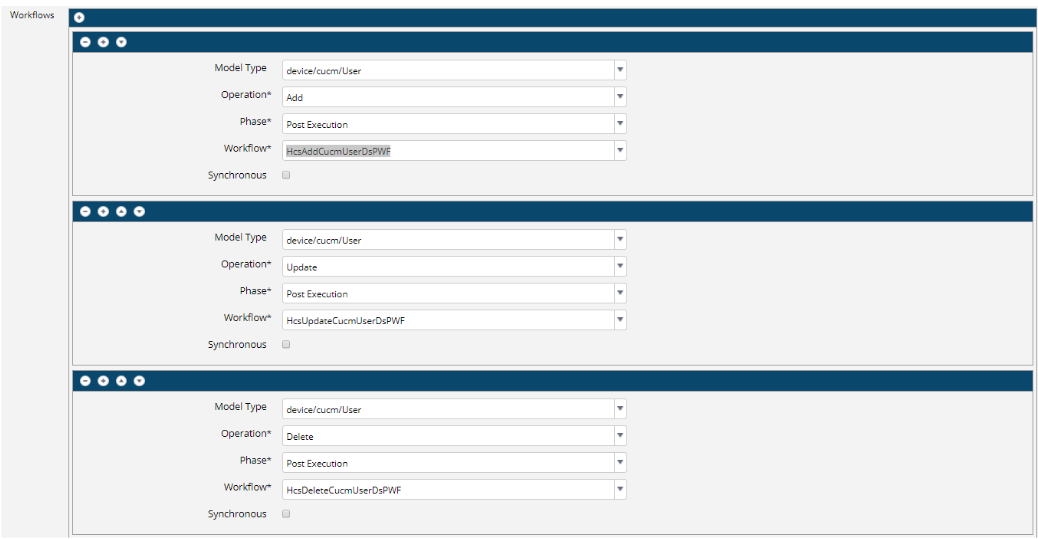Recommended CUCM Sync Setups¶
Cisco Unified CM (CUCM) sync recommendations are covered here.
Bottom Up User Sync¶
If using bottom up sync into CUCM, the users are added to CUCM via LDAP. In this scenario they do not appear in VOSS-4-UC in order to be managed until they are synced in.
Note
If you use this sync in a multi-cluster environment, additional guidance on the user sync setup is provided in the Multi-Cluster Deployments Technical Guide.
- Recommended setup
- Model Type List -
device/cucm/User - Actions - Add/Update/Del all enabled.
- When to use - scheduled. The most frequent this should run is in line with the LDAP->CUCM sync time (typically once every 24hrs but minimum of every 6hrs or so). The length of this sync should consider the maximum allowable time for an end user to be in the system in typical business practices. Edge cases can always be handled in between scheduled syncs by running the sync manually if required - that is often better than having a very frequent sync that is not typically needed.
- Events - the different actions (add/update/del) have different post execution
events for the
device/cucm/Usermodel type that need to occur. These handle various aspects of the user setup. See below for a screenshot of the setup for an example:- Add Operation workflow =
HcsAddCucmUserDsPWF - Update Operation workflow =
HcsUpdateCucmUserDsPWF - Delete Operation workflow =
HcsDeleteCucmUserDsPWF
- Add Operation workflow =
- Change notification should be used for this sync to manage load (except if using a model instance filter).
- Model Type List -
Screenshot of the event setup on the CUCM User sync:

Other Syncs¶
Beyond the syncs above, others can be setup to suit specific needs based on the implementation.
Important
In setting up processes that sync any new entities into VOSS-4-UC, these will add the entities to the hierarchy level of the sync. So this will require the use of overbuild or ad hoc move processes to get the entities into the right site, for example, if needed (such as users, phones, lines, and so on).
